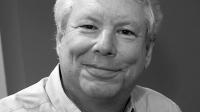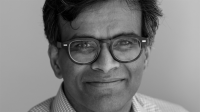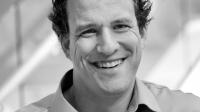Behavioral economics combines elements of economics and psychology to understand how and why people behave the way they do in the real world. It differs from neoclassical economics, which assumes that most people have well-defined preferences and make well-informed, self-interested decisions based on those preferences.
Shaped by the field-defining work of University of Chicago scholar and Nobel laureate Richard Thaler, behavioral economics examines the differences between what people “should” do and what they actually do and the consequences of those actions.
Jump to a section:
- What is behavioral economics?
- What are the origins of behavioral economics research, and who are Tversky and Kahneman?
- What role have Richard Thaler and University of Chicago economists played in the development of the field?
- What is a “nudge” in behavioral economics?
- Guide to behavioral economics terms
What is behavioral economics?
Behavioral economics is grounded in empirical observations of human behavior, which have demonstrated that people do not always make what neoclassical economists consider the “rational” or “optimal” decision, even if they have the information and the tools available to do so.
For example, why do people often avoid or delay investing in 401ks or exercising, even if they know that doing those things would benefit them? And why do gamblers often risk more after both winning and losing, even though the odds remain the same, regardless of “streaks”?
By asking questions like these and identifying answers through experiments, the field of behavioral economics considers people as human beings who are subject to emotion and impulsivity, and who are influenced by their environments and circumstances.
This characterization draws a contrast to traditional economic models that have treated people as purely rational actors—who have perfect self-control and never lose sight of their long-term goals—or as people who occasionally make random errors that cancel out in the long run.
Several principles have emerged from behavioral economics research that have helped economists better understand human economic behavior. From these principles, governments and businesses have developed policy frameworks to encourage people to make particular choices.
What are the origins of behavioral economics research, and who are Tversky and Kahneman?
Behavioral economics has expanded since the 1980s, but it has a long history: According to Thaler, some important ideas in the field can be traced back to 18th-century Scottish economist Adam Smith.
Smith is often remembered for the concept of an “invisible hand” that guides an overall economy to prosperity if each individual makes their own self-interested decisions—a key concept in classical and neoclassical economics. But he also recognized that people are often overconfident in their own abilities, more afraid of losing than they are eager to win and more likely to pursue short-term than long-term benefits. These ideas (overconfidence, loss aversion and self-control) are foundational concepts in behavioral economics today.
More recently, behavioral economics has early roots in the work of Israeli psychologists Amos Tversky and Daniel Kahneman on uncertainty and risk. In the 1970s and ’80s, Tversky and Kahneman identified several consistent biases in the way people make judgments, finding that people often rely on easily recalled information, rather than actual data, when evaluating the likelihood of a particular outcome, a concept known as the “availability heuristic.” For example, people may think shark or bear attacks are a common cause of death if they’ve read about one such attack, but the incidents are actually very rare.
With “prospect theory,” Tversky and Kahneman also demonstrated that framing and loss aversion influence the choices people make. For example, if presented with an opportunity to win $250 guaranteed or gamble on a 25% chance of winning $1,000 and a 75% chance of winning nothing, most people will choose the sure win. But if presented with the chance to lose $750 guaranteed or a 75% chance to lose $1,000 and a 25% chance to lose nothing, most people will risk losing $1,000, hoping for the slim chance that they will lose nothing at all.
This classic example demonstrates that people are more willing to take a greater statistical risk if it means avoiding a $1,000 loss versus obtaining a $1,000 win, which contradicts expected utility theory. Prospect theory and other work by Tversky and Kahneman continues to inform many areas of behavioral economics research today.
What role have Richard Thaler and behavioral economists at the University of Chicago played in the development of the field?
In the 1980s, Richard Thaler began to build on the work of Tversky and Kahneman, with whom he collaborated extensively. Now the Charles R. Walgreen Distinguished Service Professor of Behavioral Science and Economics at the Booth School of Business, he is today considered a founder of the field of behavioral economics.
Thaler’s research in identifying the factors that guide individuals’ economic decision-making earned him the Sveriges Riksbank Prize in Economic Sciences in Memory of Alfred Nobel in 2017. His ideas stem in part from a series of observations he made in graduate school that led him to believe that people’s behavior deviated from traditional economic models in predictable ways.
For example, Thaler observed that he and a friend were willing to forgo a drive to a sporting event due to a snowstorm because they had been given free tickets. But had they purchased the tickets themselves, they would have been more inclined to go, even though the tickets would have been valued at the same price regardless, and the danger of driving in the snowstorm unchanged. This is an example of the “sunk cost fallacy”—the idea that people are less willing to give up on projects they have personally invested in, even if it means more risk.
Thaler is also known for popularizing the concept of the “nudge,” a conceptual device for leading people to make better decisions. A “nudge” takes advantage of human psychology and a number of other concepts in behavioral economics, including mental accounting—the idea that people treat money differently based on context. For example, people are more willing to drive across town to save $10 on a $20 purchase than $10 on a $1,000 purchase, even though the effort expended and the amount of money saved would be the same.
Thaler and other UChicago economists—including Leonardo Bursztyn, Josh Dean, Nicholas Epley, Austan Goolsbee, Alex Imas, John List, Susan Mayer, Sendhil Mullainathan, Devin Pope, Rebecca Dizon Ross and Heather Sarsons—continue to conduct empirical research, including field experiments, that explore behavioral economics from multiple angles.
What is a “nudge” in behavioral economics?
In behavioral economics, a “nudge” is a way to manipulate people’s choices to lead them to make specific decisions: For example, putting fruit at eye level or near the cash register at a high school cafeteria is an example of a “nudge” to get students to choose healthier options. An essential aspect of nudges is that they are not coercive: Banning junk food is not a nudge, nor is punishing people for choosing unhealthy options.
Thaler’s ideas about nudges were popularized in Nudge: Improving Decisions about Health, Wealth, and Happiness, his 2008 book with former UChicago legal scholar Cass Sunstein, now of Harvard University. Businesses and governments, including the U.S. government under President Barack Obama, have adapted Thaler and Sunstein’s ideas about nudges into policy.
For example, automatically enrolling employees in 401k plans—and asking them to opt out rather than offering them the chance to opt in—is an example of a nudge to encourage better and more consistent saving for retirement. Another seeks to make organ donation standard practice, by requiring people registering for drivers’ licenses to indicate whether or not they are willing to donate.
The formal term Thaler and Sunstein use to describe a situation designed around nudges is “libertarian paternalism”—libertarian because it preserves choice, but paternalistic because it encourages certain behavior. In Thaler’s words: “If you want people to do something, make it easy.”
Guide to behavioral economics terms
The availability heuristic refers to the idea that people often rely on easily recalled information, rather than actual data, when evaluating the likelihood of a particular outcome. For example, people may think shark or bear attacks are a common cause of death if they’ve read about one such attack, but the incidents are actually very rare.
Bounded rationality refers to the fact that people have limited cognitive ability, information and time, and do not always make the “correct” choice from an economist’s point of view, even if information is available that would point them toward a particular course of action.
This might be because they cannot synthesize new information quickly; because they ignore it and instead choose to “go with their gut”; or because they don’t have the time to fully research all options. The term was coined in 1955 by Nobel laureate and UChicago alum Herbert A. Simon, AB’36, PhD’43.
Bounded self-interest is the idea that people are often willing to choose a less-optimal outcome for themselves if it means they can support others. Giving to charity is an example of bounded self-interest, as is volunteering. While these are common activities, they are not captured by traditional economic models, which predict that people act mostly to further their own goals and those of their immediate family and friends, rather than strangers.
Bounded willpower captures the idea that even given an understanding of the optimal choice, people will often still preferentially choose whatever brings the most short-term benefit over incremental progress toward a long-term goal. For example, even if we know that exercising may help us obtain our fitness goals, we may put it off indefinitely, saying we will “start tomorrow.”
Loss aversion is the idea that people are more averse to losses than they are eager to make gains. For example, losing a $100 bill might be more painful than finding a $100 bill would be positive.
Prospect theory refers to a series of empirical observations made by Kahneman and Tversky (1979) in which they asked people about how they would respond to certain hypothetical situations involving wins and losses, allowing them to characterize human economic behavior. Loss aversion is key to prospect theory.
The sunk-cost fallacy is the idea that people will continue to invest in a losing project simply because they are already heavily invested, even if it means risking more losses.
Mental accounting is the idea that people think about money differently depending on the circumstances. For example, if the price of gas goes down, they may begin to buy premium gas, leading them to ultimately spend the same amount, rather than taking advantage of the savings offered by the lower price.




